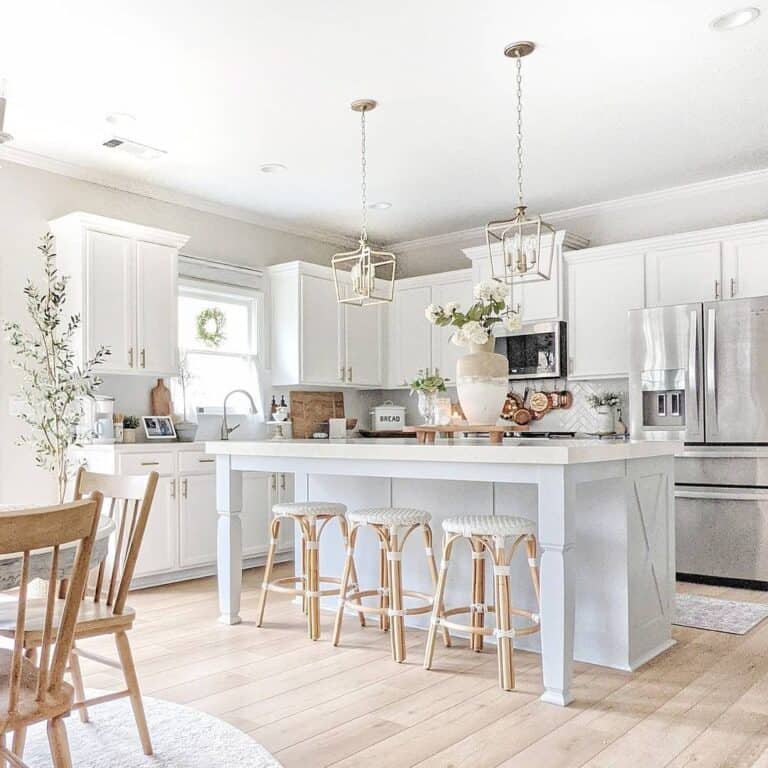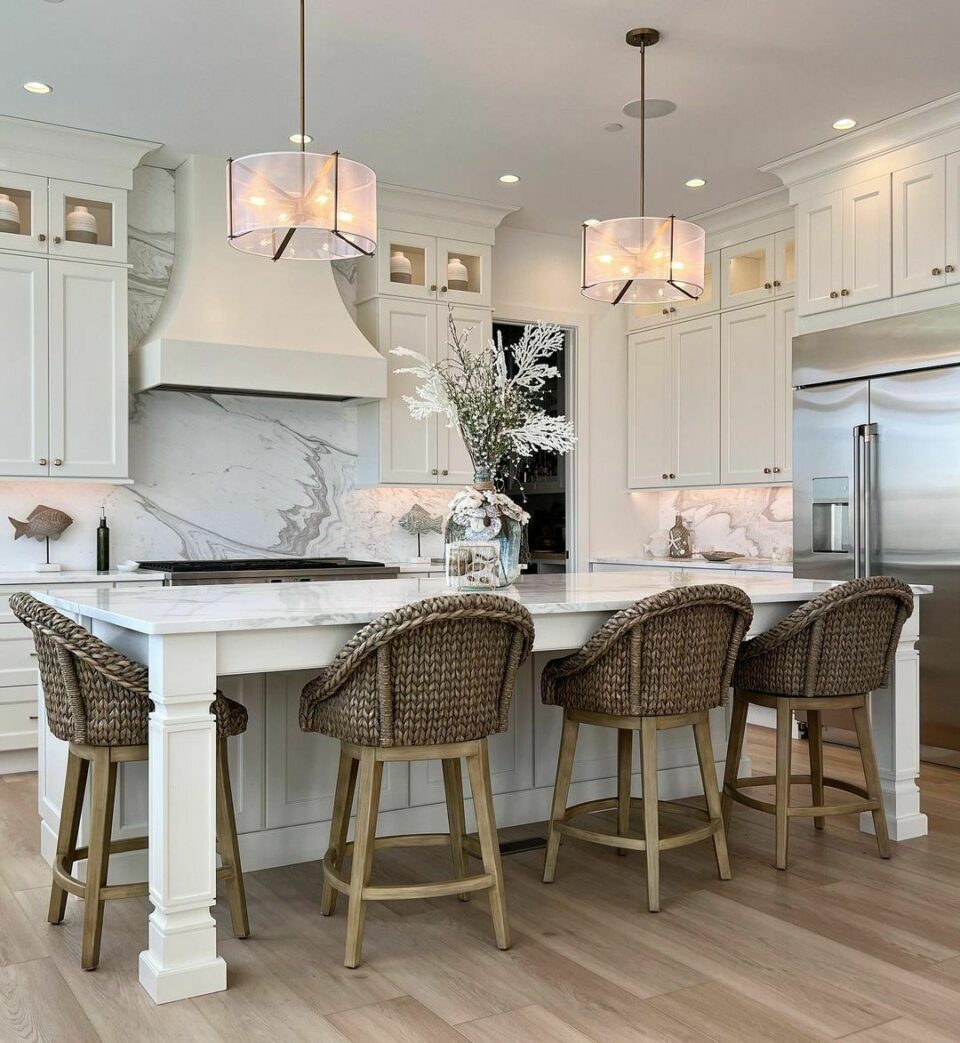Unique Kitchen Island Legs for a Personalized Kitchen Look
Unique Kitchen Island Legs for a Personalized Kitchen Look
Blog Article
Important Tips for Selecting the Perfect Dining Table for Your Kitchen
Selecting the ideal eating table for your kitchen is even more than simply an issue of preference; it demands a complete understanding of your area and demands. The shape of the table plays a pivotal duty; while rectangular tables suit bigger locations, round ones foster affection, and extendable options supply versatility. The table needs to harmonize with your kitchen area's looks and accommodate your household easily.
Measure Your Room
Choosing the excellent table starts with a thorough assessment of your readily available room. This foundational step makes certain that the table not only fits easily within the space but additionally complements the total layout and performance of your dining area. Begin by measuring the measurements of the area, taking into account entrances, windows, and any kind of existing furnishings. This will aid you figure out the maximum allowable dimension for your table.
It is important to leave appropriate area for chairs to be pulled out and for individuals to relocate around the table without blockage. A general guideline of thumb is to allow at least 36 inches of clearance from the side of the table to the nearby wall surface or item of furnishings.
Additionally, assume about the variety of individuals you generally entertain and whether you require added area for guests. Going with an extendable table can offer versatility, enabling you to accommodate differing numbers of diners. By precisely measuring your room, you lay the groundwork for picking an eating table that improves both the visual appeals and performance of your eating location.
Select the Right Shape

On the various other hand, round tables are excellent for smaller cooking areas or intimate gatherings, as they promote discussion by enabling every person to face each various other. They additionally provide a feeling of coziness and can fit well in tighter rooms because of their lack of sharp edges. Oval tables use the ideal of both globes, incorporating the length of rectangular tables with the affection of rounded ones, making them versatile for different settings.
Square tables are an additional alternative, specifically matched for square-shaped rooms. They develop a symmetrical and contemporary look, promoting an equivalent dining experience for all seated.
Product Considerations
When choosing a dining table, product considerations are critical in figuring out the table's durability, maintenance requirements, and total visual. Wood is a traditional choice, supplying classic charm and robustness.
Glass-topped tables provide a contemporary, streamlined appearance and can make a space show up larger because of their transparency. Nevertheless, they require regular cleansing to stop finger prints and spots. In addition, solidified glass is advised for its extra strength and safety.

Finally, composite materials like MDF (Medium-Density Fiber board) or plywood are affordable alternatives. These materials dig this can resemble the appearance of strong timber but might not provide the same longevity. They are generally less complicated to tidy yet can be prone to water damages if not properly secured.
Inevitably, the option of product ought to additional reading align with your kitchen area's style, your way of life needs, and your budget plan constraints. (kitchen island legs)
Seats Capacity and Comfort
Just how do you establish the best seating capacity and comfort for your table? This crucial action includes analyzing both the physical area offered in your cooking area and your household's useful needs. Begin by gauging your kitchen area to make certain the table fits comfortably, allowing at the very least 36 inches of clearance around it for simple activity. Take into consideration the variety of people that commonly eat together, as this will certainly affect the table dimension. For a family members of 4, a rectangular table of 48 inches long or a round table with a 48-inch diameter is usually sufficient.
Comfort is equally crucial. The height of the table ought to ideally be around 30 inches, giving a well balanced ergonomic stance for seated diners. Chairs ought to have a seat height of 18 to 20 inches to guarantee a comfortable dining pose. In addition, think about the chair layout; upholstered seats and supportive back-rests can enhance dining comfort substantially, particularly throughout long term meals.
Design and Aesthetics
Picking a dining table that matches your design and aesthetic appeal entails balancing individual taste with the existing design of your eating room. The table is commonly the centerpiece of the kitchen area, and its style must match the total theme of the space. Whether your kitchen area flaunts a modern, minimalist appearance or a rustic, farmhouse charm, the table you pick must integrate with these components to produce a natural and inviting environment.
Take into consideration products thoroughly; learn the facts here now wood offers an ageless appeal and can range from abundant mahogany for a traditional aim to lighter oak for a modern feel. Metal and glass tables, on the other hand, can present a smooth, industrial edge to your kitchen. Do not neglect the table's shape-- rectangular tables are functional and traditional, while round and oblong choices can foster an extra intimate eating experience.
Furthermore, pay very close attention to coatings and information. A distressed coating could add personality and warmth, whereas a shiny surface area can contribute to a clean, modern aesthetic. Eventually, your dining table need to not only in shape flawlessly right into your kitchen's design however also reflect your personal design, elevating the room both functionally and visually.
Final Thought
In final thought, picking the excellent table for a kitchen area requires mindful examination of space, form, product, seating ability, and visual consistency. Ensuring a minimum clearance of 36 inches promotes comfy motion, while the selection of shape improves spatial characteristics. Product option impacts resilience and layout, making it important to line up with the cooking area's total aesthetic. Inevitably, a well-chosen table fosters an inviting atmosphere and accommodates the house comfortably, thus boosting the eating experience.

When selecting a dining table, material considerations are vital in determining the table's longevity, maintenance demands, and overall aesthetic. For a family of four, a rectangular table of 48 inches long or a round table with a 48-inch size is normally sufficient.
Do not forget the table's shape-- rectangular tables are versatile and timeless, while round and oblong choices can cultivate a more intimate dining experience. kitchen island legs.
Report this page